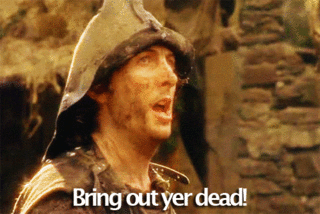
Collaboration
Collaborative research work is very common in some academic fields. In science education (my field), all of my projects are collaborative at small or large scales. For example, I may collaborate with a student on a small project, like the student’s dissertation research. Often, I am part of a large project team that spans departments and multiple universities. Sometimes, I even find myself in the position of leader (in the role of Principal Investigator; PI) of one of these large teams. But the truth is that I don’t really know how to manage a large project. I have never been trained in project management, and often I don’t think we in academic research writ large do it well.
But I’m learning. In some ways, it’s just trial by fire. In other cases, the learning comes through deliberate reflection on past work. I am just finishing up a large, grant funded project with a great team this year. A lot of things went right in that project, but some things went wrong. And now that I’m kicking off another large, grant funded project with a new team, we’re learning from those lessons. One management tool that our new team has decided to employ before the project even starts is a sort of thought experiment called the premortem.

Failure and the Premortem
In the premortem exercise, the team starts by assuming that the project has failed. At the end of the project, you didn’t meet the project goals- you just couldn’t “pull it off.” Assuming this foundation for the exercise, each team member generates a brainstorm list of reasons why the project failed. Importantly, they list every reason they can think of even those that they might be afraid to say out loud or which might seem offensive. Everyone then shares their reasons for failure until the lists are exhausted and all reasons are on the table.
In the next phase of the premortem exercise, the team examines all potential problems and failure points, and (if the list is long) prioritizes which they want to address. For each problem on that list, the team creates a solution in the form of a proactive strategy, or (less optimally) a backup plan. Each of these solutions should then be assigned to a team member or group so that if (when) the problem arises, they are ready to deal with it.
The key aspect of this exercise is to operate from a perspective of hindsight. In this way it differs substantially from an a priori risk analysis, where you are looking forward. Pre-determining failure and then post-operatively identifying reasons for failure opens the conversation to a universe of possibilities and helps everyone become aware of potential failure points before they happen.
Looking Forward
Collaborative projects are complex and we don’t often do a good job of managing them. But that is because we often lack training and experience. With a bit of planning, a good critical friend/evaluator, and some knowledge of project management (and some experience if you’re lucky), you can increase the odds of success. The premortem exercise is one of those project management tools that we should use more often in educational research.
Some colleagues and I are getting ready to launch a new multi-site project, and we’re planning on conducting our premortem at our first face to face meting a few weeks from now. I’m excited about this start to the new work and I am confident that the exercise will help us. All that said, ask me how this one went four years from now ;-]
References
Performing a Project Premortem (Harvard Business Review)
The Pre-Mortem: A Simple Technique To Save Any Project From Failure (Riskology)

This work is licensed under a Creative Commons Attribution-NonCommercial-ShareAlike 4.0 International License.
